Sri Narasimha, the avatar combining the human and lion is the fourth incarnation of Sri Maha Vishnu which happened on the day of Swathi star.
Sri Narasimha avatar had occurred at Sri Ahobilam in Andhra Pradesh which houses nine temples. Apart from Sri Ahobilam, there are lots of Sri Narasimha temples in South India which are perceived to be powerful.
These are the places where Sri Narasimha had appeared before various Sages who wanted to have His darshan.
One of them is a series of three Sri Narasimha temples near Cuddalore and Villupuram in Tamil Nadu. This write-up is about the said three temples.
Singarkudi
This temple is in Cuddalore district in Tamil Nadu bordering Pondichery State near the place called Thavalakuppam. The place itself is named after Sri Narasimha. The place is also called as Abhisheka Pakkam and Singar Koil.
Here the Swami depicts the image as the killer of Hiranyakasipu. Hence, the Deity is named Sri Ugra Narasimha.
Legend
The puranic name of this place is Sri Krishna Aranya Kshetram and five streams (Theerthams) such as Sri Jamadakni (Sri Parashu Ram), Sri Indra (leader of Devas), Sri Bruhu (Bruhu Maharishi), Sri Vamana (fifth incarnation of Sri Mahavishnu) and Sri Garuda (vehicle of Sri Mahavishnu) are attributed to this place.
Sage Vasishta has meditated and prayed at this Kshetram.
Origin
This temple was built by Pallava Kings in 6th Century and renovated by Sri Krishnadeva Raya in 16th Century. This temple was also renovated by the Kings of Vijaya Nagara.
Sri Narasimha
Here Sri Narasimha has sixteen hands. One of the hands is in pathaka hastham mode which means that all the four fingers are kept together and the thumb is bent on them with the position to land the blow on the opponent.
The other hands hold Prayoka Charkam (Holy Wheel), Ksheerika (knife), Shank (conch), Bow, Gada (mace), Shield, etc., One of the hands holds the legs of Hiranyakasipu and the other hand has his intestines.
In all, the Murthy looks ferocious. It is believed that worshipping the deity shall remove all the sins and worries.
At the sanctum, at the left side of Sri Narasimha, Hiranyakasipu’s wife Leelavati is depicted. On the right side, three demons, Prahalada, Sage Sukra and Sage Vasishta are depicted.
Other sanctums
Further, there are two Murthies of Sri Yoga Narasimha and Sri Bala Narasimha facing north. This sanctum is one of a kind whereby Sri Narasimha faces west side.
Opposite Sri Narasimha sanctum, there is a sanctum for Sri Anjaneya a few feet away. Apart from this, there is a sanctum for Sri Mahalakshmi as Sri Kanakavalli Thayar and another sanctum for Sri Andal.
Rituals
At this temple, poojas are done in ‘’Vaikasana” tradition. Another specialty is that this sanctum contains the words in Sri Narasimha Anushtup manthra.
Every Saturday, Sri Narasimha sports a navaratna crown on His head. The ornaments of the Deities are believed to be donated by the Nawab of Arcot and the French Rulers in Pondichery.
Festivals
Every year, Sri Narasimha Jayanthi is celebrated with Rath yatra. During every Swathi Star and Pradosha days, special poojas are conducted.
Timing
The temple is normally open from 07.30 A.M to 12.00 Noon and 04.30 P.M to 09.00 P.M. The timings are subject to change during festivals and special occasions.
It is ardently believed that Sri Ugra Narasimha here should be worshipped to get rid of all debts, to alleviate the ill effects of planet positions and for marriage.
Poovarasankuppam
This temple is situated at Poovarasankuppam near Siruvanthadu at Cuddalore District in Tamil Nadu. The location is between Cuddalore and Pondichery.
Legend
There are lots of legends attached to this temple.
Nara Hari
On the northern bank of the Then-Penna river, a Sage named Nara Hari was doing penance and he prayed that Sri Narasimha should appear before him with Sri Maha Lakshmi in a calm and serene pose.
Hence Sri Narasimha appeared before the Sage with Sri Maha Lakshmi in His lap. To add to the happiness of the Sage, both Him and Sri Maha Lakshmi are calmly looking at each other. This is the unique Murthy in India with the God and Goddess looking at each other.
Saptha Rishis
Though Sri Ahobilam is the place where the Avatar of Sri Narasimha happened, it is believed that Sri Narasimha had shown the Avatar to Saptha Rishis only in this place. Hence this place is also called South Ahobilam or Dakshina Ahobilam.
Pallava King
During 5th Century, there was a Pallava King who had converted into the other cult. On the basis of the advice of the that cult’s philosophers, he started demolishing Hindu temples and tortured all Sages and Sadhus.
Whoever dared to oppose him were killed. Two of the Sages named Nara Hari and Siva Giri cursed that the King suffer from Brahma Hatya Dosha (sin of killing a brahmin).
The King started feeling the effect of the curse immediately. Whenever he tried to eat, his food became a plate of pests; Whenever he tried to lie down to sleep, his bed became the sheet of human skins, flesh and bones.
The King realized that such curse came upon him only because he had ill-treated and killed the Sages. He immediately went to Sri Narasimha at this place and worshipped Him for alleviation of all his sins.
He heard a celestial voice which told him that he had suffered because of the hardship he had meted out to others and that if he reconstructed the temple and did a kumbabhishekam, his sins would be pardoned.
The King had done so and he also asked the two Sages to forgive him.
Poovarasa
There was a King named Poovarasa, who was subservient to Vijaya Nagara Kingdom. The King Poovarasa was subjected to many ordeals as he was frequently disturbed by the intruders.
He did penance for 48 days seeking the blessings of Sri Narasimha. Sri Narasimha appeared in his dream and granted him that all his ordeals would cease and that he should re-construct and renovate the temple soon on attainment of his wishes. He had done so.
There is a belief that Sri Krishna Deva Raya also had visited this temple and had the darshan of Sri Narasimha.
Origin
It is believed that till 5000 years back, there was only a pillar which was considered as Sri Narasimha and worshipped.
Around 1700 years back, during the rule of Pallava Kings, the sanctum of Sri Narasimha was believed to have been built.
Pallava Kings have contributed for renovation and also constructed Sri Narasimha temples. They were so devoted to Sri Narasimha that most of them had ‘Narasimha’ and ‘Simha’ in their names. The original pillar which was worshipped was later damaged by the perpetrators from the other cult. The pieces of that pillar are being kept under the main Raja Gopuram now.
Sri Varada Raja
During the year 2004, the temple authorities had decided to construct a Sannidhi for Sri Andal. On the Maha Maham day, i.e 6th March 2004, the ground was dug up for the said construction.
To the pleasant surprise of everyone, a statue of Sri Maha Vishnu with conch, wheel and smiling face was unearthed at the north-west side of the temple.
The village people lamented that, long back, when the Hindu temples were being looted by the extremists of the other cult, the people had buried the statues so that they were not usurped by the culprits. They also opined that the unearthed Sri Vishnu Statue should have been buried at the time of looting.
The village people were happy and ecstatic at the discovery and demanded that Sri Vishnu statue be re-installed as Sri Varada Raja Swamy. After conducting the necessary rituals, the same was done.
During the days having Makha Star, special poojas are conducted for Sri Varada Raja.
Main Sanctum
In this temple, Sri Narasimha is the Moolavar (the main Deity) and Sri Varada Raja is the Urchavar (the procession Deity).
At the sanctum, Sri Narasimha has four hands. The upper two hands hold the conch and the wheel. The lower right hand is in Abhaya Hastham (blessing protection) and Sri Maha Lakshmi is seated on His left lap and He has curved His lower left hand around Her.
His right leg is down on a lotus. Sri Mahalakshmi holds a lotus in Her left hand and Her right hand is around Sri Narasimha.
Other shrines
In the Maha Mandapam of this temple, the sculptures of Sri Ram, Sri Sita and Sri Hanuman are depicted. Apart from that, there are also sculptures of drummers and dancers.
The sculptures of Sri Varadaraja with Sri Devi and Bhoo Devi, Sri Venu Gopal with Sri Radha and Rukmini, Sri Ranganathar on Adi-Seshan are also kept.
In the Oonjal (wooden swing plank) mandap, the sculptures of Sri Adi-Seshan, Sri Venu Gopalan, Sri Visvaksenar, Sri Anjaneya and Sri Garuda are kept.
In the mandap in the sanctum, the sculptures of Sri Yoga Narasimha, Dasavathar of Sri Vishnu and others are kept.
During the days of Swathi Star, Sudharshan Homam (Havan) is being conducted here. The round stone well in this temple is considered to contain sacred water.
Timing
The temple is open from 8.30 A.M to 12.30 P.M and 04.00 P.M to 08.00 P.M. The timings are subject to change on festivals and special occasions.
It is believed that worshipping Sri Narasimha in this temple removes the effects of doshas.
Parikkal
There is a belief that the history of this place had 12 chapters and the person who took the scriptures for printing had died accidentally.
At the time of Brahmotsavam held in 1922, a legend named Athur Gururajachariar had given a lecture on the temple and the history is believed to be derived from that speech.
Legend
In Tamilnadu, the erstwhile South Arcot District was earlier called as Pancha Krishnaranya Kshetram. Vriddachalam is one of the places in the district.
Vasantha Rajan
Vriddachalam was ruled by a King named Vasantha Rajan. The King intended to a Homam for Sri Narasimha Swamy for three days and asked all the other small Kings in his Kingdom to attend the Homam.
At that time, there was a Shiv-Bhakt named Parasura (the disciple of Thripurasur), who wanted to disturb the Homam and kill Vasantha Rajan.
Vasantha Rajan was preparing for the Homam based on the guidance provided by his Guru, Sage Vamadeva. When he was tying the Kangan in his hand preparatory to do the Homam, he came to know about the evil designs of Parasura.
Immediately Vasantha Rajan realized the injustice proposed to be meted out by Parasura. Hence, he started doing the penance on Sri Narasimha uttering two manthras such as “Arakshara” and “Amirtha Rakshara” and he was in a meditation stage named “Asam pragnya samadhi” meaning that he had no feeling or awareness about himself.
At the same time, Parasura entered the city and was searching for Vasantha Rajan. He could not find him in the palace and spotted him at the meditation place.
Soon on spotting, Parasura started beating the King and when the King did not relent, he used his axe to split the King’s head.
At that time Sri Narasimha appeared as Sri Ugra Narasimha and killed Parasura. Vasantha Rajan had the darshan of Sri Ugra Narasimha and devoutly prayed to Him that it would be difficult for people to worship Him in such a ferocious state and that He should appear in a calmer pose.
Sri Ugra Narasimha relented to His devotee’s wish and appeared as Sri Lakshmi Narasimha. He also said that as He had killed the demon named Para (Parasur), His form should be ensconced or positioned in the place and it should be named as Parakala. [Later the name became Parikkal].
Vasantha Rajan had requested Sri Viswa Karma, the celestial architect to sculpt the Vigraha / Murthy. The Vigraha was consecrated by Sage Vamadeva. Poojas were being conducted for quite a longtime in the temple.
Degeneration
However, after a certain period, slowly people stopped doing poojas and an anthill formed on the Murthy and covered it fully. Nobody seemed to know the existence of Sri Narasimha there.
Re-consecration
After some years, a residential colony of Brahmins came into being near the temple. An orally challenged person (dumb) was living there.
One day, he had a dream in which Sri Narasimha appeared and asked him to release His Vigraha from the anthill and that He should be re-installed.
On waking up, the dumb person realized that he had got the talking prowess due to the blessings of Sri Narasimha and he clearly told others about the dream. People were enchanted at this miracle and started removing the anthill.
On removal, they had found the Vigrahas of Sri Lakshmi Narasimha, Sri Narasimha salagramam (river-stone with natural sediments which resemble the face of Sri Narasimha – normally found in Nepal) and Sri Anjaneya. For many years, there was no Urchava Murthy at this temple.
Urchava murthy
Near Parikkal, there was another Brahmin Colony at the place named Natham. There, a Madhva Brahmin (Kannadiga who had followed the teachings of Sri Madhvacharya who preached Visishta-dwaitham) was having an idol of Sri Lakshmi Narasimha at his home for doing pooja.
One day, he had a dream and Sri Narasimha appeared in it and told him that the pooja Vigraha at his home should be handed over to the temple. Abiding by the order, the devotee had handed over the Deity to the temple and the said Deity had become the Urchava Murthy.
Every year, Brahmotsavam is celebrated to commemorate the day of emergence of the Urchava Murthy in the temple.
Till 17th Century, the temple was run by Madhva Brahmins and later Vaishnavite customs are being followed. There is a strong belief that Sri Lakshmi Narasimha here fulfills the desires of His devotees.
Sanctum
In the sanctum, Sri Lakshmi Narasimha is established. Sri Kanaka Valli Thayar exists in the South-West, Sri Bhaktha Anjaneya is in North-West and Sri Varadaraja is in North.
Opposite the sanctum, we can see Sri Garuda’s sannidhi. Outside the sanctum, we can see Sri Varasidhi Vinayaka in South-West. At the entrance of the temple, we can see the sculptures of Pancha-Naga Murthies.
At the North-West corner of Parikkal, a pond named Chakkarai theertham serves as the temple tank where float festivals are conducted.
Timing
The temple is open from 06.00 A.M to 01.00 P.M and from 04.00 P.M to 08.00 P.M. The timings are subject to change on festivals and special occasions.
Ashta Narasimha Temples
It may be noted that there is a group of Ashta (Eight) Narasimha temples spanning Tamil Nadu.
Sri Lakshmi Narasimha at Poovarasankuppam is in the middle. Sri Narasimha temple at Singar Kudi is at the East. Sri Narasimha temples at Athili and Parikkal are at the West.
Sri Narasimha temples at Cholingar and Singa Perumal Koil are at the North. Sri Narasimha temples at Namakkal and Chithalavadi are at the South.
It is auspicious to visit Sri Narasimha temples on the days of Swathi Star as it is the birth star of Sri Narasimha.
As it is not possible to cover all the above eight temples in a single day, there is a belief that it is good and auspicious to visit Singarkudi, Poovarasankuppam and Parikkal on the same day as the three temples are in a straight line from North-East to South-West.
If one starts from Chennai early in the morning, the three temples can be covered by the evening.
[Note: The reference is obtained from the sthala puranam uttered by the archakas at the respective temples and a tamil book named ‘’Sree Lakshmi Narasimmar – Moonru Sthalangalin Varalaru’’ available near the temples.]




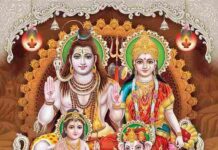
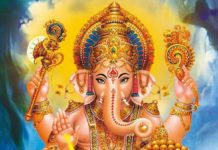
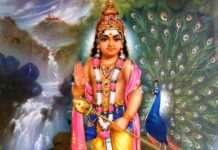
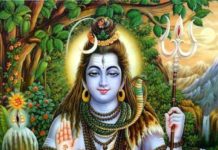
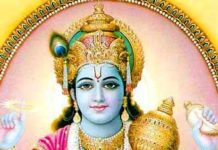
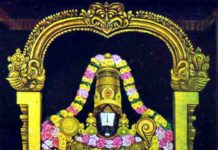


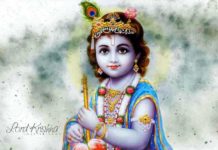
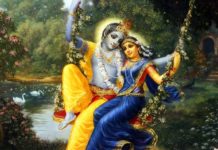
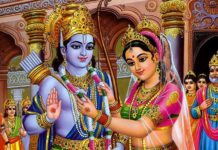
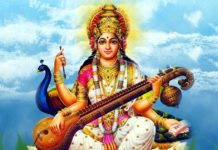

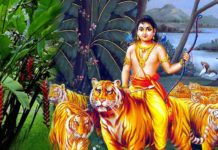
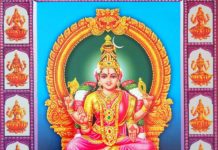
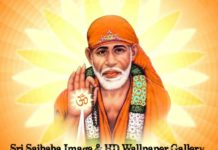
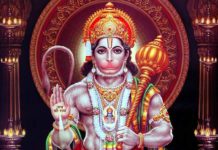
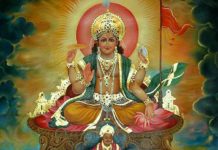
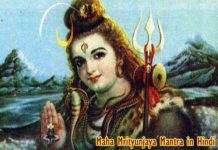
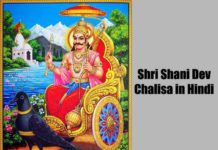
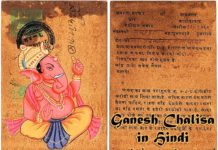
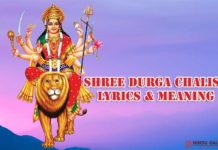

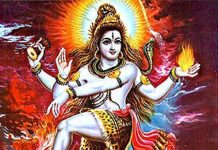

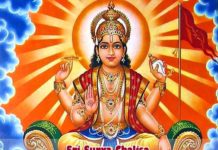

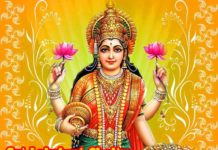
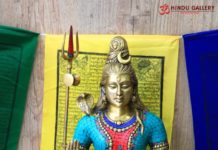






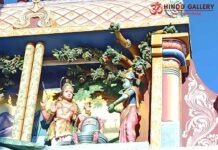


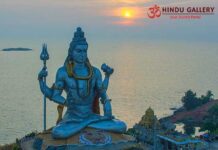
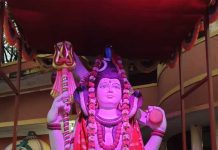
Which one to start with
Parikkal??? Or Singirikudi
Depending on the origin and commencement of travel, any order is fine. From Chennai, Parikkal, Singarkudi and Poovarasankuppam is the route practically followed. If we start from Chennai by 5 a.m in the morning, we will be able to cover all the three in time. Since Singarkudi is almost in Pondy area, we can also try to have the darshan of Sri Panchamukha Anjaneya at Panchavati.